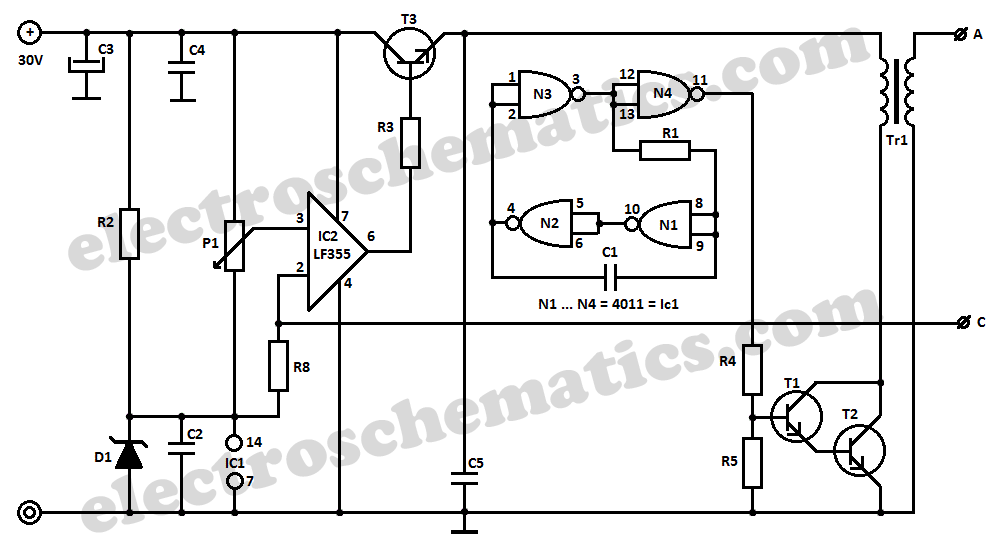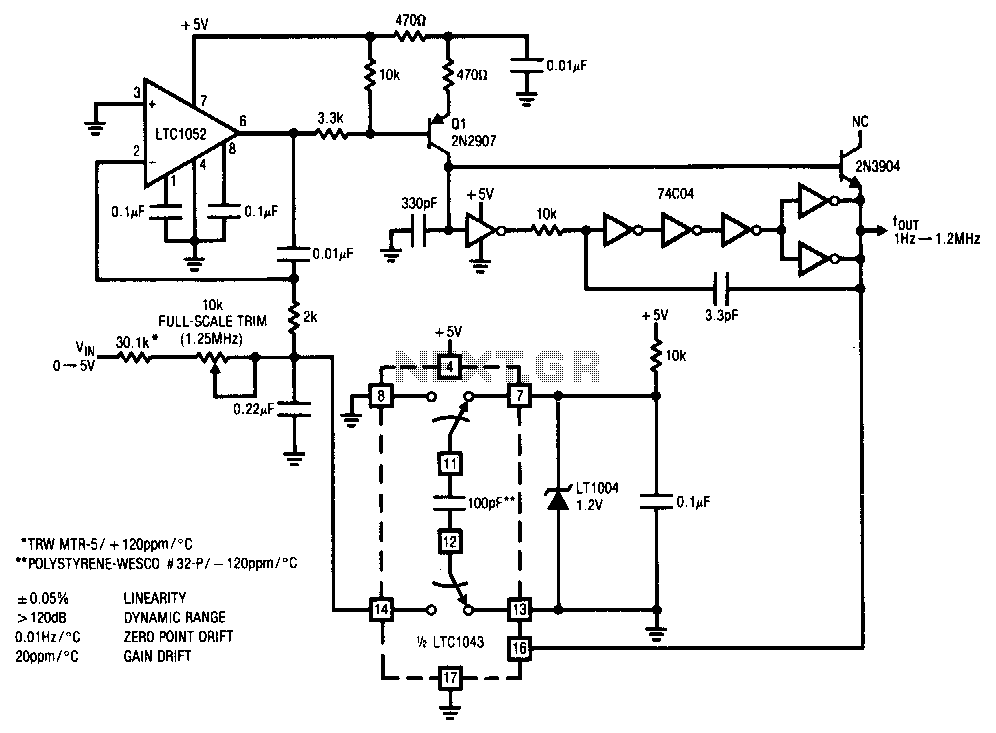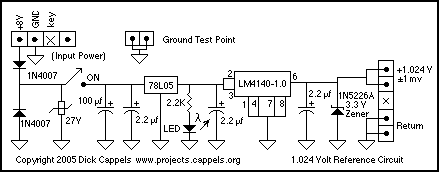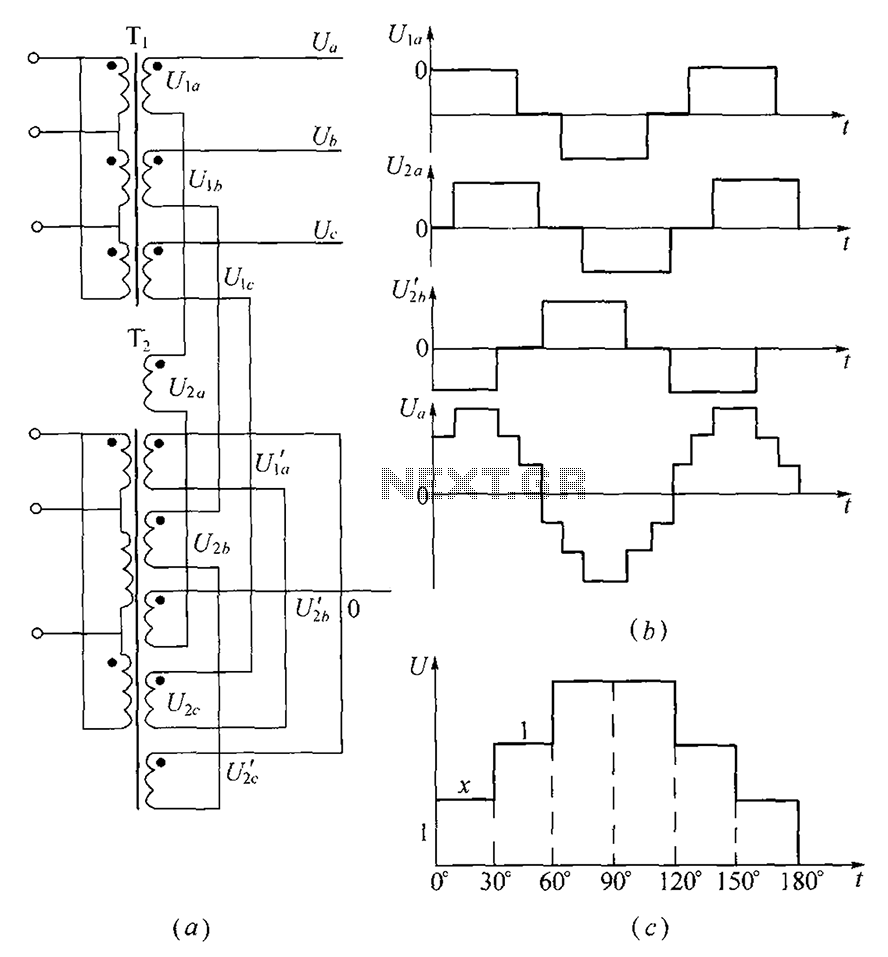
PERIOD TO VOLTAGE CONVERTER
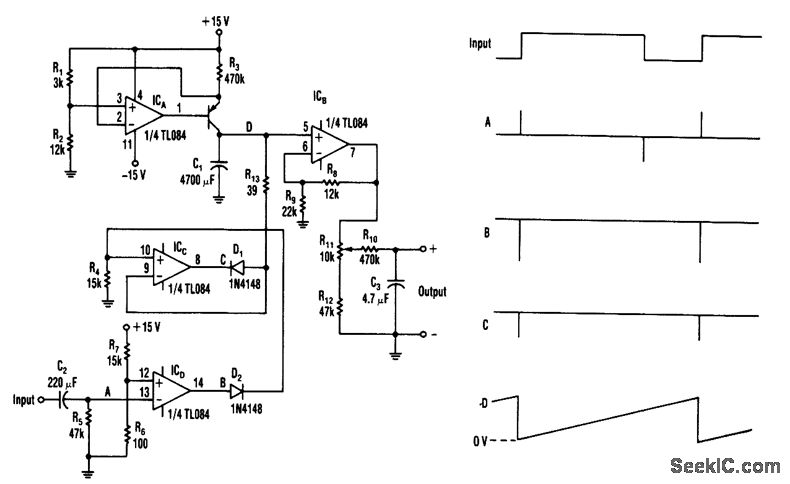
When the input transitions from low to high, a narrow positive pulse is generated at point A. This pulse results in a -13 V level at point B, which causes diode D2 to turn off. Consequently, the V+ voltage of the integrated circuit ICC drops to zero. The charge stored in capacitor C1 is quickly absorbed by ICC. The time constant of capacitor C2 and resistor R5 defines the discharge period, which is approximately 10 picoseconds. ICB functions as a buffer with a gain determined by the formula (R8 + R9)G·R9 - 1.545. The average voltage at ICD is calculated as (1362fx1.545)G·2 = 1052t. Resistor R10 and capacitor C3 work together to smooth the sawtooth waveform, resulting in a DC output.
The described circuit operates on the principle of pulse generation and signal conditioning. Upon receiving a low-to-high transition at the input, a narrow positive pulse is produced at point A. This pulse triggers a voltage drop to -13 V at point B, effectively disabling diode D2, which is crucial for preventing reverse current flow in the circuit. As a result, the V+ terminal of the integrated circuit ICC is brought down to zero, indicating that the circuit is in a quiescent state with no active voltage supply.
The charge present on capacitor C1 is rapidly absorbed by the ICC, ensuring that the circuit can quickly respond to subsequent input changes. The discharge time of capacitor C2, in conjunction with resistor R5, is determined by their time constant, which is approximately 10 picoseconds. This rapid discharge is essential in high-speed applications where timing and signal integrity are critical.
The buffer ICB is designed to provide isolation between stages while maintaining signal integrity. Its gain is calculated using the resistors R8 and R9, following the formula provided. This gain allows for appropriate amplification of the signal while ensuring that the output remains stable and within desired parameters.
The average voltage at ICD is derived from the specified formula, indicating the relationship between the input signal and the output voltage, which is critical for ensuring that subsequent stages in the circuit receive the correct signal levels.
Finally, the combination of resistor R10 and capacitor C3 serves to smooth the sawtooth waveform generated in the circuit, converting it into a stable DC output. This smoothing process is vital for applications where a clean DC signal is required for further processing or utilization in other parts of the system. The careful selection of component values for R10 and C3 will dictate the effectiveness of the smoothing action and the quality of the output signal.When the input goes from low to high, a narrow positive pulse is generated at point A. This pulse becomes - 13 V at point B, which cuts off D2. ICC`s V+ voltage becomes zero. The charge on C1 will be absorbed by ICC on in a short time. The time constant of C2 and R5 determines the discharge period-about 10 ps. ICB is a buffer whose gain is equal t o (R8+R9)G·R9-1. 545. ICD`s average votiage will be (1362fx1. 545)G·2=1052t. R10 and C3 smooth the sawtooth waveform to a dc output. 🔗 External reference
The described circuit operates on the principle of pulse generation and signal conditioning. Upon receiving a low-to-high transition at the input, a narrow positive pulse is produced at point A. This pulse triggers a voltage drop to -13 V at point B, effectively disabling diode D2, which is crucial for preventing reverse current flow in the circuit. As a result, the V+ terminal of the integrated circuit ICC is brought down to zero, indicating that the circuit is in a quiescent state with no active voltage supply.
The charge present on capacitor C1 is rapidly absorbed by the ICC, ensuring that the circuit can quickly respond to subsequent input changes. The discharge time of capacitor C2, in conjunction with resistor R5, is determined by their time constant, which is approximately 10 picoseconds. This rapid discharge is essential in high-speed applications where timing and signal integrity are critical.
The buffer ICB is designed to provide isolation between stages while maintaining signal integrity. Its gain is calculated using the resistors R8 and R9, following the formula provided. This gain allows for appropriate amplification of the signal while ensuring that the output remains stable and within desired parameters.
The average voltage at ICD is derived from the specified formula, indicating the relationship between the input signal and the output voltage, which is critical for ensuring that subsequent stages in the circuit receive the correct signal levels.
Finally, the combination of resistor R10 and capacitor C3 serves to smooth the sawtooth waveform generated in the circuit, converting it into a stable DC output. This smoothing process is vital for applications where a clean DC signal is required for further processing or utilization in other parts of the system. The careful selection of component values for R10 and C3 will dictate the effectiveness of the smoothing action and the quality of the output signal.When the input goes from low to high, a narrow positive pulse is generated at point A. This pulse becomes - 13 V at point B, which cuts off D2. ICC`s V+ voltage becomes zero. The charge on C1 will be absorbed by ICC on in a short time. The time constant of C2 and R5 determines the discharge period-about 10 ps. ICB is a buffer whose gain is equal t o (R8+R9)G·R9-1. 545. ICD`s average votiage will be (1362fx1. 545)G·2=1052t. R10 and C3 smooth the sawtooth waveform to a dc output. 🔗 External reference
